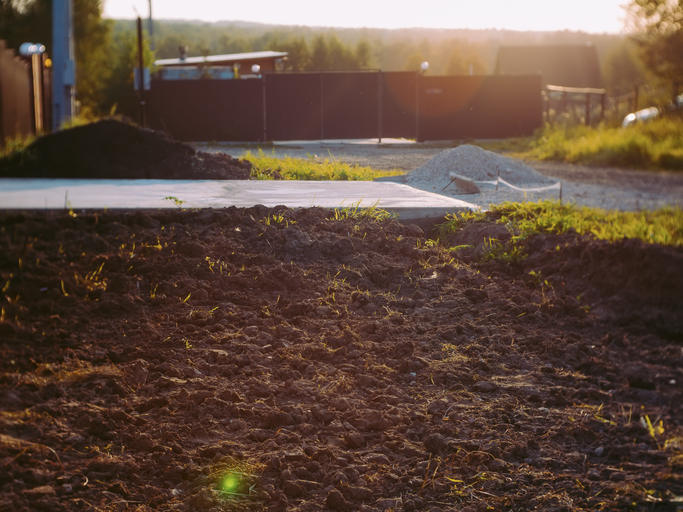Choosing a manufactured home is a big step—and in Florida, it’s a smart one. But before your home arrives, there’s a crucial part of the process you don’t want to overlook: preparing your land. Whether your lot is tucked into a quiet community or spread out on rural acreage, how you prep the site sets the tone for everything that comes next.
At Jacobsen Homes, we know land prep can feel daunting, especially if it’s your first time. We’re here to break it down and help you avoid costly missteps before installation day.
Why Land Preparation Matters
The stability of your manufactured home starts from the ground up. A well-prepared site protects your investment by preventing moisture damage, foundation issues, and drainage problems. It also ensures your home complies with local building codes and HUD (U.S. Department of Housing and Urban Development) standards.
Site prep costs can vary significantly depending on the condition of the land, but it’s not uncommon for total expenses to total in the thousands or even tens of thousands. That investment is well worth it when it means peace of mind, better performance, and long-term durability for your home.
Step-by-Step Site Preparation
Getting your lot ready means laying the groundwork for a secure, comfortable, and code-compliant home. Here’s what goes into doing it right.
Site Inspection and Surveying
Every great home starts with a strong foundation, and that begins with understanding the land you’re working with. A licensed surveyor can verify your property boundaries and ensure your lot meets zoning regulations for manufactured housing. At the same time, a professional inspection will assess the topography, identify drainage concerns, and determine whether additional grading or clearing will be necessary.
Navigating Permits and Regulations
Before you break ground, it’s important to know what’s allowed. Every municipality in Florida has its own zoning laws, so check whether your lot is zoned for a manufactured or mobile home. You’ll also need to secure permits for construction, utility installation, and occupancy. In some cases, an inspection may be required after setup to confirm HUD code compliance.
Jacobsen Homes can refer you to a retail center or community that can help you understand the permitting process.
Soil Testing and Foundation Planning
Don’t skip the soil test. This critical step reveals whether your land has the load-bearing capacity to support a home. Sandy soils, for example, might need compaction, while clay-heavy soils could require additional grading. The results of your soil test will influence which type of foundation is best—whether it’s a pier-and-beam system or another engineered solution.
In Florida, where weather and water tables can vary widely, choosing the right foundation can mean the difference between a secure home and costly structural repairs down the line.
Clearing and Grading the Site
Once you’ve selected the building area, it’s time to prepare the surface. Trees, rocks, and brush must be removed to create a level pad. After clearing, the site is graded to direct water away from the future home. Proper grading is essential in Florida’s wet climate to prevent pooling, erosion, and mold issues under your home.
Even if your lot looks flat, a professional grading job ensures that water flows in the right direction and doesn’t compromise the foundation.
Don’t Overlook Utilities and Access
Utility planning is one of the most important—and most overlooked—parts of site prep. Getting your systems in place before your home arrives helps avoid costly delays and ensures everything is move-in ready from day one.
Utility Installation Before Delivery
Water, sewer or septic systems, electricity, and even internet lines need to be planned and trenched before your home is placed. If you’re building in a rural area, this may include drilling a well or installing a septic tank. Utility installation should always follow local safety codes and be completed by licensed professionals.
Waiting until after delivery to install utilities can lead to unnecessary delays and expenses. Preparing everything in advance keeps your project on schedule and makes installation day go smoothly.
Preparing for Delivery and Setup
Manufactured homes are delivered in large sections, so it’s important to ensure the access route is clear and wide enough for transport. Overhanging tree limbs, tight corners, or soft ground can all create challenges during delivery.
Avoiding Common Mistakes
Some of the most frequent mistakes homeowners make during land preparation include skipping soil testing, underestimating drainage needs, or assuming the land is ready for building without a proper inspection. Others delay utility installation or forget to factor in the cost of permits, driveway construction, and access road improvements.
Budgeting a contingency fund for unexpected expenses is a smart move that can keep your project on track without last-minute stress.
Trust Florida’s Leader in Manufactured Housing
Preparing your land for a mobile or manufactured home doesn’t have to be complicated—especially when you work with a trusted partner. At Jacobsen Homes, we’ve spent over 65 years helping Florida residents create homes that are built to last and easy to love. From helping you choose the right floor plan to connecting you with licensed professionals for site prep, we’re here every step of the way.
Ready to get started on your home? Reach out today to speak with one of our expert consultants and learn more about how we can help bring your vision to life.

